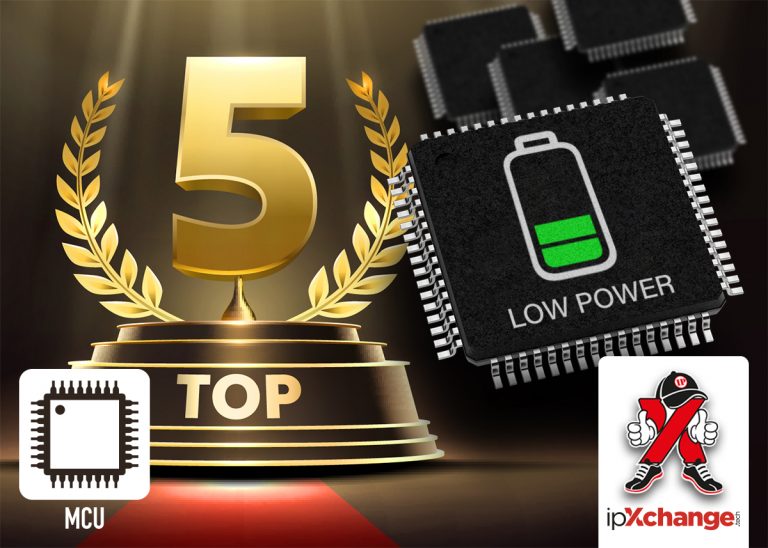Low power consumption is a big talking point for many devices that ipXchange has come across in our first year of producing (great) content on disruptive semiconductor technology. This is particularly interesting when it comes to MCUs as these devices form the heart of many embedded systems, so without further ado, here are ipXchange’s top 5 picks for low-power MCUs/SoCs, from highest to lowest power consumption!
DISCLAIMER(S):
-> This list only covers devices that ipXchange has written about. Since we’ve written about nearly 200 devices so far, we apologise if we have missed something that should have made the list.
-> The current draws marked below are often made in reference to sleep, deepsleep, or standby modes, where it is unclear how much the MCU/SoC will be able to do within this state. That said, we have ignored “off” or “powered-down” modes when compiling this list and tried our best to include details of the remaining functionality in these low-power modes.
-> Please also note that we cannot comment on Arduino’s boards as we have only written about their product range from an overview perspective.
-> This post will only cover the power consumption aspects of the devices. Learn more by following the links to the board pages.

Atmosic’s ATM3330e Bluetooth SoC features a Cortex-M33F core running at 64 MHz with a current draw of just 1.6 µA with 32 kB RAM, or 1.1 µA in hibernate mode. What makes Atmosic’s device so disruptive is that external RF energy harvesting is built into the chip, so this device has the potential to be powered from the electromagnetic waves that surround us at all times, on top of being able to operate via other sources of harvested energy – Learn more


Nordic’s nRF52832 Bluetooth SoC ups the savings with 1.2 µA base current in ON mode + 0.02 µA per 4 kB of RAM added to the system. This comes with a Cortex-M4 core operating at up to 64 MHz. With 51.6 μA/MHz running from RAM, it’s not the best power-saving device during operation, but as the heart of Nordic’s Thingy:52, it’s still a very exciting device for battery-powered IoT builds – Check out Thingy:52 here

Ambiq’s Apollo3 Blue MCU sports Bluetooth connectivity and a Cortex-M4 processor running at up to 96 MHz. With <6 µA/MHz current draw during normal operation and 1 µA current draw in deep sleep mode with RTC, it’s clear why Ambiq are huge players in the wearables market – Learn more

e-peas’ EDMS105N MCU is another MCU designed to operate on harvested energy and features a current draw of just 18 µA/MHz for its Cortex-M0 architecture (up to 24 MHz). Deep sleep mode provides RTC and 8 kB SRAM retention at just 0.340 µA current draw, so we’re really hitting the lower power levels when it comes to dedicated MCUs designed to make use of every bit of energy available to them! – Learn more

Move-X’s MAMWLE LoRaWAN module is the surprising winner in this race to the bottom, with an astonishing 0.255 µA current draw in standby mode, though it is unclear what is left running of this 48 MHz Cortex-M4 device when the power goes that low, and the power consumption increases dramatically as soon as the MCU is running – 1.7 mA at 48 MHz in sleep mode. Of course, Move-X’s Cicerone board places their MAMWLE right in the sights of asset tracking applications, so longest battery life is surely a key reason for choosing a module with this level of power saving – Learn more
Well, that’s our top 5 for low power consumption MCUs/SoCs! Did anything take your fancy? Follow the links and apply to evaluate any of these technologies for use in a commercial project. We can’t wait to hear what you’ve got in mind.
Keep designing!

